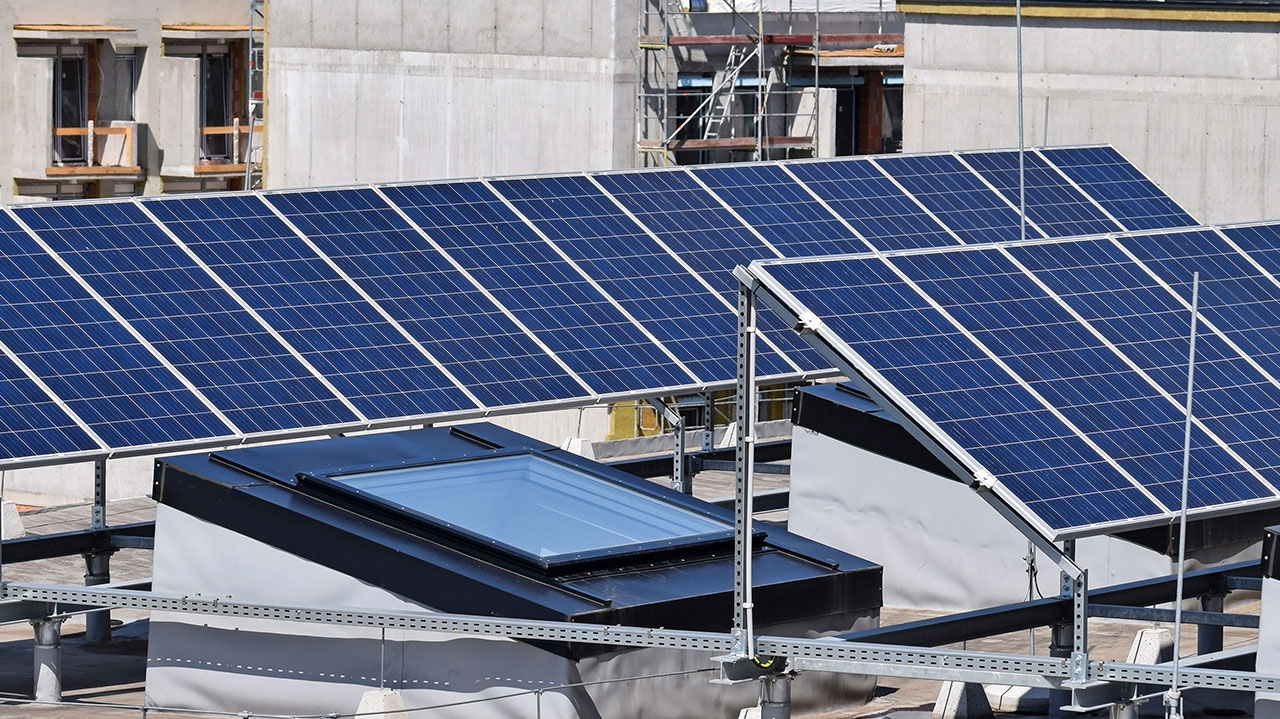Commercial solar panels are becoming an increasingly important part of the building landscape. With their wide flat roofs, commercial buildings are perfect for solar installations, which can bring many benefits to a building:
- Both the federal government and individual states offer generous tax credits for buildings that adopt solar panels – up to 30% of the total installation cost under the federal plan, with additional benefits under state programs.
- Solar panels can mean massive energy savings as well. For a one-time upfront expense, your building has the opportunity to defray up to 75% of its ongoing energy costs.
- For buildings that store perishables or items that need to be refrigerated, a solar panel system combined with battery storage can replace the need for emergency generators.
- Solar panels protect your roof membrane from direct exposure to UV rays, extending the lifespan of the equipment. They also add an extra barrier that defends against ice, snow, hail, and falling debris.
- Lastly, there’s an intangible benefit – building tenants like to see that building owners are invested in keeping costs down and doing their part for the environment, which means that commercial solar panels essentially function as an advertisement for the building itself.
Leaving these benefits aside, building a commercial solar panel implementation is also a good investment in terms of complying with future laws. As the country begins to become more serious about fighting climate change, states such as California already mandate that new housing construction should come with solar panels pre-installed. It’s not difficult to imagine a future where all new commercial construction must apply to the same guideline – and a subsequent future in which existing commercial properties must retrofitted to the same standard. In short, installing solar now means getting ahead of the game.
Solar Isn’t All Upside
You have to be careful when installing commercial solar panels. While the upside of commercial solar vastly outweighs the downsides, it doesn’t mean that the downsides don’t exist.
Just for example, solar panels have been known to catch fire – which is the subject of a contentious lawsuit between Tesla and Walmart in which the retail giant blames the solar panel manufacturer for at least seven fires that occurred over the last seven years. Walmart alleges that not only were the panels poorly manufactured, they also weren’t grounded properly during installation.
Solar panel fires aren’t necessarily a common problem, but there’s also not a lot of data on how often they occur. That being said, Germany, a country with nearly 2 million solar panel installations, has recorded only 350 fires during the last 20 years of solar panel operation.
Instead, it’s much more likely that an inexperienced installer will damage your roof during installation, or that they’ll install solar panels in such a way that they’ll penetrate the roof membrane and introduce the potential for leaks. There’s even the possibility that your roof could be damaged during routine maintenance and inspection of your commercial solar panels.
Protect Your Roof with Solar Panel Mounts from PHP System/Design
In order to completely protect your roof while installing and maintaining solar panels, you need three things:
- An experienced rooftop solar installer
- A system of walkways and roof crossovers that will allow easy access to installers and maintenance teams without forcing them to walk on the roof surface itself
- A ballasted, non-penetrating solar rack system with rubber pads between the feet and the roof surface
The rackmount solar system will keep your solar panels elevated and angled in order to maximize their ability to draw power from the sun, while at the same time preventing the sharp corners and edges of your panels from contacting your roof membrane. In the unlikely event of a fire, elevating these panels away from the roof surface will help prevent the flames from spreading.
Meanwhile, installing a system of walkways and crossovers helps workers reach the solar panel installation without stepping on any part of the roof surface – preventing slips and falls while also preventing them from crushing insulation or creating other penetrations of their own. With these systems in place, you’ll be able to create a complete system of protection that allows you to enjoy the benefits of rooftop solar without falling victim to any of the drawbacks.




